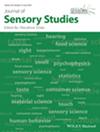Crossmodal strategies have been proven to be useful to enhance sweetness perception, although, in general, the segmentation of consumers is not an essential part of this kind of research. The aim of the present study was to determine if a set of crossmodal strategies could be useful to modify sweetness perception in three different age groups: young, middle-aged, and senior adults. A butter cookie and a milkshake sample were reformulated (appearance and aroma of both samples, and the mouthfeel of the milkshake) to assess liking and perception of overall flavor and sweetness intensities. Results suggested that adding a sweet-related aroma enhanced sweet taste/flavor intensity, without affecting liking ratings, for all the studied age groups. Liking and the ratings for flavor and sweetness intensity were significantly different among age groups, but no interactions “sample x age” were identified, suggesting that crossmodal interactions were similar for all age groups.
The growing demand for low-sugar foods has led food companies to reformulate their products, requiring research into the best ways to develop successful low-sugar alternatives. Research on potential crossmodal interactions is useful to guide companies to attend consumers' demands, but there is a lack of information on how to adapt the most successful strategies to each consumer segment (beyond cross-cultural studies). Results of the present research include interesting data on three different consumers' segments and their perception of two kinds of products in which cross-modal strategies were used to reformulate a control sample: a solid food -exemplified using a butter cookie- and a beverage -exemplified using a milkshake-.


